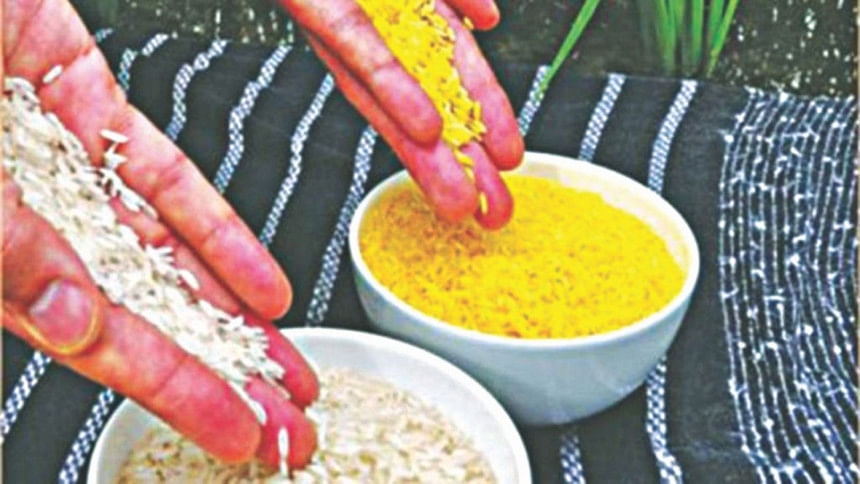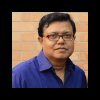Halt campaign against vitamin A-enriched rice

Over a hundred Nobel laureates in a joint letter urged all concerned to refrain from campaigning against the Golden Rice -- the first Vitamin A-enriched rice in the world.
"We call upon Greenpeace to cease and desist in its campaign against Golden Rice specifically, and crops and foods improved through biotechnology in general," reads the letter, addressed to the leaders of the United Nations, governments around the world and Greenpeace -- an environmental group against the development of genetically modified (GM) or engineered foods.
The global scientific fraternity came rallying behind the Golden Rice at a time when scientists in Bangladesh as well as scientists in at least three other countries are at an advanced stage of developing the world's first Vitamin A-enriched rice, popularly known as Golden Rice for its yellowish colour.
"We call upon governments of the world ... to do everything in their power to oppose Greenpeace's actions and accelerate the access of farmers to all the tools of modern biology, especially seeds improved through biotechnology," reads the letter.
This letter is part of a pro-GM campaign that was initiated by English biochemist and molecular biologist Sir Richard John Roberts, who was awarded Nobel Prize in Medicine in 1993 with Phillip Allen Sharp for the discovery of genetic sequences known as introns and the mechanism of gene-splicing.
Since scientists infused daffodil gene, responsible for Vitamin A producing beta carotene, into rice at the end of the last century, the Golden Rice has been a topic of debate throughout the world with the largest anti-GM group Greenpeace opposing its development from the forefront. Time magazine placed the Golden Rice on its cover in 2000.
In subsequent years scientists infused a gene from maize, which also produces beta carotene, into rice and trials are underway for the commercial release of the grain within the next couple of years. The Golden Rice was designed as a solution to vitamin A deficiency (VAD). Some 250 million people worldwide suffer from VAD, including 40 percent of children under the age of five in the developing world, according to World Health Organization statistics cited by the scientists.
The Philippines is now conducting multi-location-confined field trials on the Golden Rice while Bangladesh has done confined field trials at one location and planning to go for multi-location trials as well, prior to conducting open field trials within a couple of years. Indonesia and India are at greenhouse-level testing stage of developing the grain.
According to the pro-GM scientists' campaign website, www.supportprecisionagriculture.org, the letter is signed by as many as 109 Nobel laureates including 90-year old Paul Berg, a 1980 Nobel winner in Chemistry and a pathfinder in genetic engineering.
The signatories of the joint letter include, among others, Zhores I. Alferov (Nobel in Physics in 2000), Sidney Altman (Chemistry - 1989), Hiroshi Amano (Physics - 2014), Werner Arber (Medicine - 1978), Richard Axel (Medicine - 2004) and David Baltimore (Medicine - 1975).
Greenpeace is critical against the Golden Rice as the organization claims the grain to be environmentally irresponsible, poses risks to human health, and could compromise food, nutrition and financial security. Greenpeace fears that if released, the grain would contaminate the non-GM rice.
The Nobel laureates, on the other hand, ponder, "How many poor people in the world must die before we consider this a "crime against humanity"?
“We urge Greenpeace and its supporters to re-examine the experience of farmers and consumers worldwide with crops and foods improved through biotechnology, recognize the findings of authoritative scientific bodies and regulatory agencies, and abandon their campaign against 'GMOs' in general and Golden Rice in particular,” reads their letter.
They scientists said, Greenpeace has spearheaded negative campaign against the Golden Rice, which has the potential to reduce or eliminate much of the death and disease caused by VAD, which has the greatest impact on the poorest people in Africa and Southeast Asia. "VAD itself is the leading cause of childhood blindness globally affecting 250,000 - 500,000 children each year. Half die within 12 months of losing their eyesight," the letter noted.

 For all latest news, follow The Daily Star's Google News channel.
For all latest news, follow The Daily Star's Google News channel. 



Comments